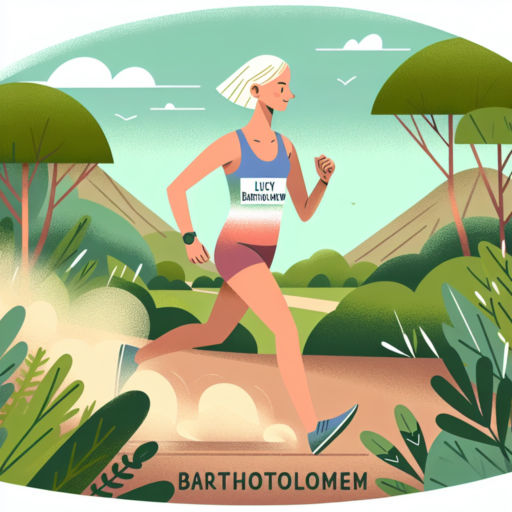Understanding the Basics: Hiking vs Running
At first glance, hiking and running might appear to be variations of the same activity. However, each offers a distinct set of benefits and challenges, tailored to suit different fitness levels and preferences. Exploring the core differences between hiking and running is essential for anyone looking to optimize their physical health and mental well-being.
Physical Intensity and Impact
Running is characterized by its high-impact nature, often requiring a sustained cardiovascular effort over a shorter period of time. This activity significantly stresses the lower body, promoting endurance, and cardiovascular health. Conversely, hiking is generally considered a lower-impact activity, typically conducted on uneven terrain which engages a broader range of muscles, enhancing strength and balance while reducing the risk of injury associated with repetitive stress.
Engagement with Nature
One of the intrinsic advantages of hiking over running is the opportunity to immerse oneself in nature. While runners can certainly enjoy scenic routes, hikers often access more remote, tranquil environments away from urban settings. This connection with nature has been linked to reduced stress levels and improved mental health, offering a peaceful respite from the hustle and bustle of daily life.
Understanding the fundamental distinctions between hiking and running helps individuals make informed decisions about which activity aligns best with their personal health goals and lifestyle preferences. Whether seeking the thrill of an uphill climb or the exhilaration of a speedy run, both activities offer unique benefits that contribute to a healthier, more active lifestyle.
Benefits of Hiking: Why It’s More Than Just a Walk
Many people undervalue the power of a good hike, often dismissing it as merely a long walk. However, hiking is so much more than just a way to get from one point to another. It’s an activity packed with benefits that touch on every aspect of wellness, from the physical to the mental, making it a holistic approach to health and well-being.
Physical Health Advantages
One of the most obvious benefits of hiking is its impact on physical health. Engaging in this activity can significantly boost cardiovascular performance, strengthen muscle groups, and enhance overall stamina. The varied terrain provides a natural resistance that helps tone the body, making each step a mini workout. Furthermore, the act of hiking promotes weight loss and improves balance and coordination, showcasing its versatile nature as a comprehensive exercise.
Mental and Emotional Wellness
Apart from the undeniable physical benefits, hiking also plays a crucial role in improving mental health. This activity fosters mindfulness, allowing individuals to connect with their surroundings and present moment, effectively reducing stress levels. It’s an escape from the hustle and bustle of daily life, offering a peaceful retreat into nature. The tranquility and natural beauty encountered on trails can significantly boost mood and alleviate symptoms of anxiety and depression, illustrating how hiking is genuinely therapeutic.
In summary, the benefits of hiking extend far beyond the simplicity of walking. It is an enriching activity that nurtures the body, mind, and soul, proving that it’s indeed much more than just a walk. Its comprehensive advantages underscore the importance of incorporating it into one’s lifestyle for holistic health and happiness.
Benefits of Running: How It Boosts Your Health and Mind
Running is not just a physical activity but a comprehensive tool that benefits both your body and mind. Engaging in this exercise regularly can lead to substantial improvements in various aspects of your physical and mental health. This is not just about shedding those extra pounds; it’s a journey towards a healthier, more vibrant you.
Physical Health Enhancements
When discussing the benefits of running, the most evident advantages appear in the realm of physical health. Regular running sessions contribute significantly to cardiovascular health, improving heart strength and efficiency. It also aids in maintaining a healthy weight, as the act of running burns calories and builds muscle, which in turn boosts metabolism. Moreover, running has been associated with reduced risks of chronic diseases such as type 2 diabetes, heart disease, and certain types of cancer.
Mental Health and Well-being
Beyond the physical gains, running offers profound mental health benefits. It is a potent stress reliever, helping to lower levels of cortisol, the body’s stress hormone, thus promoting a sense of calm. Running also stimulates the production of endorphins, often referred to as the body’s feel-good hormones, which can create a sensation commonly known as the «runner’s high.» This euphoric feeling is a natural mood lifter and can even act as a natural antidepressant, reducing symptoms of depression and anxiety.
In conclusion, running stands out as an accessible and versatile exercise with the power to profoundly impact physical and mental health positively. Its benefits span from enhancing cardiovascular health and aiding in weight management to uplifting mental health and mood. Incorporating running into your routine is a step towards a healthier lifestyle for both your body and mind.
Comparing Calories Burned: Hiking vs Running
When it comes to burning calories and improving cardiovascular health, choosing the right exercise is crucial. Both hiking and running are popular options, yet they burn calories at different rates due to the varying intensities and terrains involved. Understanding these differences can help you make an informed decision about which activity might best suit your fitness goals.
Calories Burned Hiking
Hiking, especially on uneven terrain, engages more muscle groups than running on a flat surface. This results in a significant caloric burn, though the exact number can vary widely depending on the difficulty of the trail, your pace, and your body weight. On average, a person weighing around 155 pounds can burn approximately 440 calories per hour while hiking. However, challenging trails with steep inclines can increase this number substantially.
Calories Burned Running
In contrast, running typically burns more calories per hour compared to hiking, thanks to its continuous high-intensity effort. For the same 155-pound individual, running at a moderate pace of 6 miles per hour can torch about 590 calories. The calorie burn can soar even higher with speed and intensity, making running a potent exercise for weight loss and cardiovascular fitness.
Injury Risks: Hiking and Running Compared
When considering the physical activities of hiking and running, it’s important to note that each comes with its own set of injury risks. Understanding these risks helps enthusiasts of either sport to prepare adequately and potentially minimize their chances of getting injured.
Injuries Common in Running
Running, known for its high-impact nature, often leads to injuries related to overuse. The repetitive motion primarily affects the lower body, leading to conditions such as shin splints, stress fractures, runner’s knee, and plantar fasciitis. These injuries stem from the constant impact of feet hitting the ground, which can strain muscles, ligaments, and joints over time.
Injuries Common in Hiking
Hiking, while generally considered lower impact compared to running, presents its own unique set of challenges that can lead to injury. The uneven terrain of most hiking trails increases the risk for ankle sprains and strains, as well as knee pain and back issues. Additionally, the act of carrying a backpack over long distances adds stress to the back and shoulders, potentially leading to posture-related injuries.
Both hiking and running offer numerous health benefits but come with risks that participants should be mindful of. By understanding these injury risks, individuals can take proactive steps like proper training, wearing appropriate gear, and gradually increasing intensity to enjoy these activities safely.
Equipment and Gear: What You Need for Hiking vs Running
Understanding the distinct equipment and gear necessary for hiking and running can streamline your outdoor experience, ensuring you are well-prepared for the trails or the track. While both activities share a love for the outdoors, their gear requirements significantly differ, highlighting the importance of selecting the right equipment for your chosen activity.
Hiking Essentials: Conquering the Trails
Hiking gear focuses on durability, comfort, and safety. A good pair of hiking boots or shoes is paramount, offering ankle support and robust protection against rugged terrains. Equally essential is a high-quality backpack, designed to carry essentials comfortably, including water, food, a first aid kit, and navigation tools like a compass or a map. Layered clothing that can easily adapt to changing weather conditions and a hiking pole for balance in uneven terrains are also recommended for an enhanced hiking experience.
Running Gear: Keeping the Pace
When it comes to running, lightweight and comfort take precedence. The cornerstone of running gear is a pair of running shoes that provide good cushioning and support to absorb the impact on various surfaces. Clothing should be breathable, moisture-wicking, and designed for high visibility if running in low light conditions. Unlike hiking, where heavy backpacks can be the norm, running emphasizes minimalism, with small waist packs or armbands to carry essentials like keys, a small amount of cash, or a mobile phone. A water bottle specifically designed for runners is also crucial to stay hydrated without breaking stride.
Best Locations for Hiking and Running: From Urban Trails to Wilderness
Finding the perfect location for your next outdoor adventure can make all the difference in your hiking or running experience. Whether it’s an urban trail that offers the convenience of city life mixed with the beauty of nature, or a wilderness path that puts you in the middle of serene landscapes, the right track can transform your exercise into an unforgettable journey.
Urban trails often provide a unique blend of accessibility and natural beauty, making them ideal for those who live in the city but still crave the tranquility of nature. These paths can take you through historical neighborhoods, along riverbanks, or even through city parks, offering glimpses of wildlife and greenery amidst the urban landscape. Not only are these trails convenient for daily runs or hikes, but they also serve as a quick escape from the hustle and bustle of city life.
On the other hand, venturing into the wilderness for hiking or running can offer a more immersive experience with nature. These locations often feature diverse terrains, such as forests, mountains, and deserts, challenging and enlightening those who traverse them. The solitude and raw beauty of wilderness trails provide a sense of escapism and an opportunity to reconnect with nature on a deeper level. From well-trodden paths in national parks to secluded routes known only by locals, the wilderness holds a wealth of trails waiting to be explored.
The Mental Health Perspective: Hiking vs Running for Stress Relief
Exploring the outdoors through hiking and running are both popular activities that offer significant benefits for mental health and stress relief. From the tranquility of nature walks to the exhilarating rush of a morning jog, each provides a unique path towards achieving a calmer state of mind. Delving into the mental health perspective, it’s essential to understand how these activities stimulate our minds differently and the roles they play in managing stress.
Neurochemical Impacts of Hiking
Hiking immerses you in the serene beauty of the natural world, a factor that alone significantly contributes to stress reduction. When you’re out on a trail, your body increases the production of endorphins, also known as the ‘feel-good’ hormones, which naturally help in alleviating stress and anxiety. The visual stimulus of green spaces has been linked to the enhancement of mood and even the improvement of cognitive function, making hiking an exceptional activity for those looking to relieve mental fatigue.
The Cardiovascular Boost from Running
On the other side of the spectrum, running offers a more dynamic form of stress relief. It’s well-documented that running can quickly elevate heart rate, improve blood flow, and release a flood of endorphins. The repetitive nature of running, often referred to as the ‘runner’s high,’ leads to a meditative state, clearing the mind and effectively reducing stress levels. Running’s ability to offer a robust cardiovascular workout not only strengthens the heart but also significantly contributes to the reduction of symptoms associated with depression and anxiety.
Whether choosing the introspective solitude of hiking or the vigorous intensity of running, both activities are invaluable tools in the battle against stress. By understanding the distinctive benefits they offer from a mental health perspective, individuals can better tailor their exercise routines to meet their psychological needs and preferences for stress relief.
Hiking vs Running: Which is Better for Weight Loss?
Deciding between hiking and running for weight loss can be a challenge, as both offer unique benefits and experiences. While running is often considered a quick and efficient way to burn calories, hiking provides a less intense, yet effective alternative. Each activity has its merits when it comes to shedding pounds and improving overall health.
Caloric Burn Comparison
One of the primary considerations in any weight loss journey is the amount of calories burned. Running is renowned for its high caloric burn rate, largely due to its intense nature. A person can burn approximately 600-800 calories per hour running, depending on pace and individual differences. Hiking, on the other hand, has a lower baseline for calories burned—around 400-550 calories per hour. However, hiking’s caloric burn can increase significantly with added elements like rugged terrain and carrying a backpack, making it competitive with running under the right circumstances.
Impact on the Body
Another aspect to consider is the physical impact each activity has on the body. Running, especially on hard surfaces, can be hard on the knees, ankles, and other joints due to the high impact of each stride. This makes it potentially less sustainable over the long term for some individuals. Hiking, in contrast, is often seen as gentler on the body, with natural terrain providing variable, but generally softer, impacts. This can make hiking a more accessible long-term activity for a diverse range of people looking to lose weight.
The choice between hiking and running for weight loss ultimately depends on personal preference, fitness level, and lifestyle. Both activities provide excellent fitness benefits and opportunities for calorie burn, making them valuable tools in any weight loss regime. The key is finding which activity best aligns with individual goals, enjoyment, and sustainability for long-term health.
Integrating Hiking and Running Into Your Fitness Routine
Combining hiking and running into your fitness regimen can elevate your physical health, bring mental clarity, and introduce a refreshing variety to your routine. Both activities offer unique benefits and challenges, making them complementary forces in a balanced fitness strategy.
When considering hiking as a part of your fitness routine, it’s essential to recognize its impact on enhancing endurance and strength, particularly in your lower body. Hiking across varying terrains engages different muscle groups, and the natural inclination of trails can significantly improve your cardiovascular health. Moreover, the scenic paths provide a mental serenity that gym workouts often cannot offer.
On the other hand, running is an excellent way to boost cardiovascular fitness, calorie burn, and endurance. Integrating running into your routine can offer a more consistent cardio workout, enabling you to build stamina and lung capacity. It’s an activity that can be easily adjusted to your fitness level by varying pace, distance, and frequency.
To harmonize hiking and running, consider alternating between them throughout the week. This approach allows your body to recover from the high-impact nature of running while still staying active through hiking. Additionally, switching between these exercises can prevent the mental and physical burnout often associated with repetitive workout routines.



![[Voted No.1 Hydration Belt] Black Runtasty Winners' Running Fuel Belt - Includes accessories: 2 BPA Free Water Bottles & Runners Ebook - Fits Any iPhone - w/Touchscreen cover - No Bounce Fit and more!](https://m.media-amazon.com/images/I/51nwUsnj-3L._SL160_.jpg)



![[Voted No.1 Hydration Belt] Blue Winners' Running Fuel Belt - Includes Accessories: 2 BPA Free Water Bottles & Runners Ebook - Fits Any iPhone - w/Touchscreen Cover - No Bounce Fit and More!](https://m.media-amazon.com/images/I/41LUXDbamhL._SL160_.jpg)


